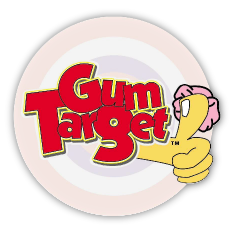The Ancient Roots of Chewing Gum
The practice of chewing gum in ancient times was far from the recreational activity we consider today. The Greeks chewed mastic—a natural resin—as a means of maintaining oral hygiene. Cleansing their teeth and freshening their breath, the act of chewing this resin, which they called mastichan, played a part in their daily regimen.
Ancient Mayans and Aztecs found utility in chewing chicle, a sap harnessed from the Sapodilla tree. These societies believed that chicle could combat hunger and thirst—two significant adversaries in their natural environment. This chewable sap was deeply integrated into their cultural practices, passing through generations as a traditional resource.
In North America, indigenous populations favored the spruce tree’s resin for its chewable texture and availability. Such practice served an antiseptic function. The Native Americans used this natural resin to care for their mouths long before the advent of modern dental science.
The exchange of goods and customs between the Old and New Worlds introduced European settlers to the native practice of chewing spruce resin. It represented an intersection of knowledge and tradition, a fusion that would eventually steer the narrative toward the commercial phenomenon that chewing gum would become.
 The Industrialization of Chewing Gum
The Industrialization of Chewing Gum
The story of the industrialization of chewing gum begins with a visionary entrepreneur, John B. Curtis. In 1848, he saw potential in the commercialization of a product that had, until then, been collected and enjoyed in a rather informal manner. Curtis developed “The State of Maine Pure Spruce Gum,” effectively creating the first commercially manufactured chewing gum. His operations were rudimentary, with the gum’s production and packaging reflecting a nascent industry still in its infancy.
The real turn to mass production came with Thomas Adams Sr., who ushered in the era of chicle-based gum in the late 1860s. Adams had hoped to use chicle, a natural latex sourced from the Sapodilla tree, as a rubber substitute. When that venture did not pan out, he turned his attention to the potential for creating a chewable product, innovating with the addition of flavors such as licorice.
The move from the hand-crafted resins of yore to a manufactured good required advancements in both production methods and material refinement. Gum-making shifted from a craft to an industry, with factories dedicated to the extraction, purification, and flavoring of gum bases. It became a good that could be mass-produced, distributed, and marketed to a burgeoning consumer base.
As the demand for chewing gum grew, its presence became a staple in American culture. Chewing gum was fast becoming emblematic of a new era of consumption, convenience, and commodification. It was a small luxury, a token of leisure that could be enjoyed by the masses, reflecting a country comfortable with indulgence and the burgeoning force of its consumer economy.
With the industrialization of chewing gum also came the diversification of flavors and packaging. Manufacturers experimented with a range of taste profiles, tapping into consumer desires for novelty. Gum was marketed to catch the consumer’s attention—vibrant wrappers, engaging slogans, and strategic branding became paramount as competition within the industry intensified.
As the 20th century dawned, brands like Wrigley and Bazooka emerged, companies that would come to dominate the market and become household names. Their success was driven by adept marketing and an understanding of the consumer’s psyche. The creation of iconic brands within the chewing gum industry is a study of market savvy and responsiveness to consumer trends.
Wartime Chews and Post-War Booms
During the World Wars, chewing gum was issued to American soldiers as a standard part of their rations. It helped alleviate stress, staved off hunger, and was a simple luxury that provided a semblance of normalcy amid the chaos of war. The act of chewing gum helped to improve concentration and reduce tension during long periods of vigilance and combat.
This small act of generosity introduced chewing gum to many cultures and demographics who had previously been unfamiliar with the product. As the soldiers returned to their homelands, they carried with them the acquired taste for this chewable good, laying the foundation for its international spread.
The post-war boom was characterized by an uptick in consumer spending and a hunger for the comforts of pre-war life—and gum, familiar and inexpensive, was in high demand.
As America stepped into its role as a global superpower, its cultural artifacts, including chewing gum, found new markets. Chewing gum became synonymous with American pop culture, symbolizing leisure, youthfulness, and the free-spiritedness attributed to the American way of life.
American brands began to establish manufacturing plants in multiple countries, broadening their global footprint. This expansion was accompanied by strategic marketing efforts to appeal to local tastes and preferences, further ingratiating gum as a universal treat.
The Invention of Sugarless Gum and the Dental Connection
During the 1950s and 60s, public health messages started to draw attention to the risks associated with sugar, particularly regarding dental health. This awareness fostered a demand for alternatives that could satisfy the desire to chew gum without the cavity-causing consequences of sugar.
The advent of sugarless gum appealed to consumers who were becoming increasingly health-conscious. Dentists and other health professionals started to endorse sugar-free alternatives for their patients, as they could indulge in the habit of chewing gum without the detrimental effects on their teeth.
One of the early innovators in the field of sugarless gum was a dentist named Dr. Petrulis who appreciated the value of chewing gum that didn’t contribute to tooth decay. Another significant event took place when Trident gum was introduced to the market with the slogan “Great Taste That’s Good for Your Teeth,” appealing directly to dental health concerns. Trident’s sugarless gum contained xylitol, an alcohol-based sugar substitute, which was shown to have tooth-friendly properties.
Aspartame and other sugar substitutes provided the sweet flavor consumers desired without the high-calorie content or dental erosion associated with sugar. This advancement allowed manufacturers to produce a wide array of sugarless gum products that could satisfy a variety of flavor preferences without compromising health.
Agencies like the American Dental Association began to recognize the benefits of sugar-free chewing gum. Certain sugarless gums were awarded seals of approval for their ability to neutralize plaque acids, strengthen teeth, and reduce dry mouth. These endorsements strengthened the position of sugarless gum in the marketplace as a product beneficial to dental health and general well-being.



